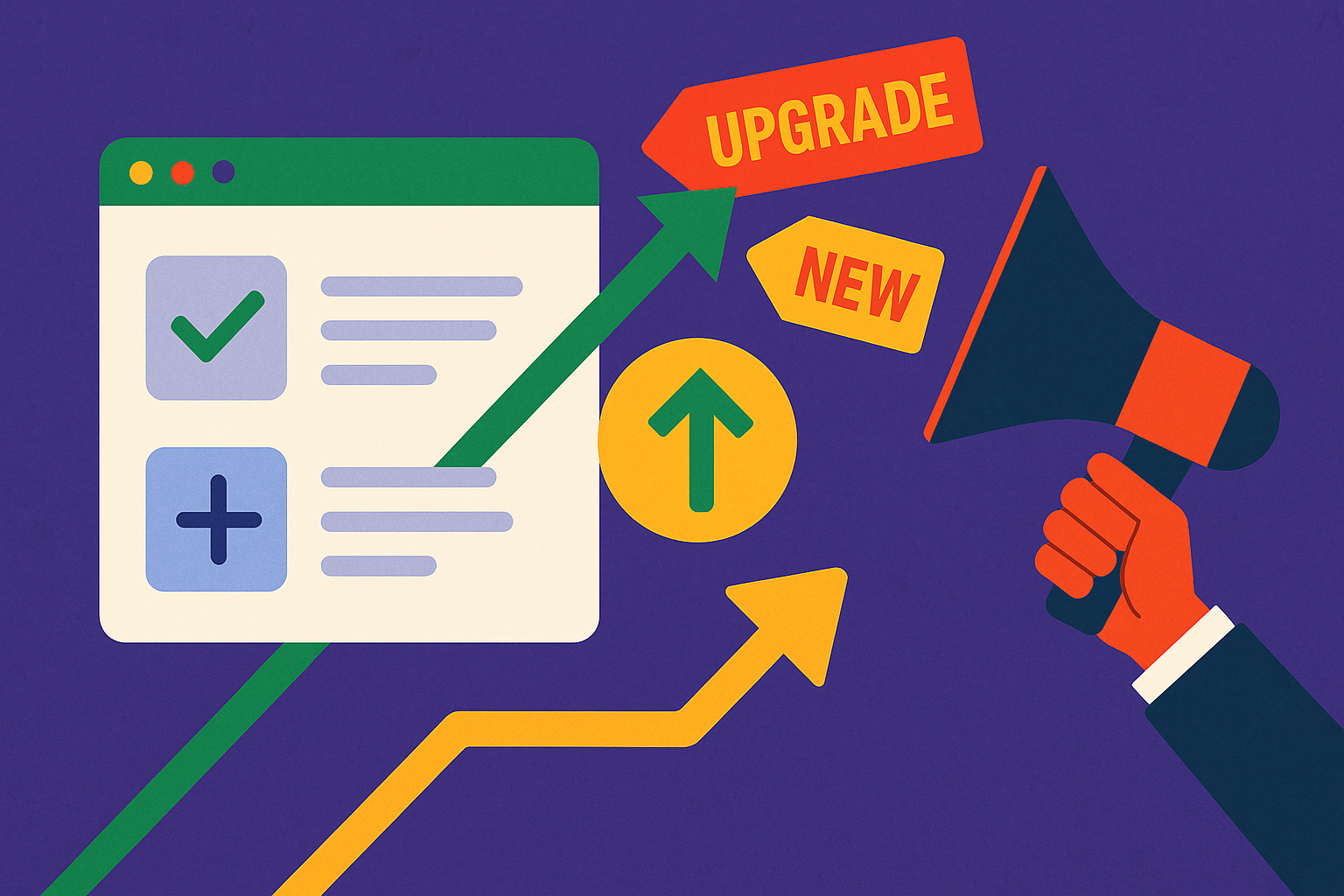Key Takeaways
- Why Notion falls short: No subscriber tools, poor SEO, no analytics, and limited scalability.
- Migration process: Export from Notion, structure data, import to SimpleDirect, set up subscribers, and redirect links.
- Post-migration wins: Better user engagement, SEO traffic, analytics, and a polished, professional look.
Introduction
Using Notion for your changelog? You're not alone—but you’ve probably outgrown it.
Many startups and small teams begin with Notion because it’s simple and familiar. But as your product grows, so do your changelog needs.
In this guide, we’ll show you exactly how to migrate your changelog from Notion to a professional tool like SimpleDirect in just a few steps.
You’ll also see why this move can transform your product communication with improved organization, SEO, analytics, and user engagement.

Why Notion Was a Great Starting Point
Notion is a favorite for startups managing changelogs, and it makes sense. Here’s why:
- It’s fast and easy: No coding skills required.
- Flexible structure: Customize how you display updates.
- Affordable: Free or low-cost plans fit tight budgets.
- Familiar tool: Many teams already use Notion for internal documentation.
For small teams with low complexity, it’s a solid choice. But as your team grows, its limitations become clear.
Why You’re Outgrowing Notion
As your product scales, Notion starts to feel like a quick fix rather than a sustainable solution. Here's why:
| Limitation | Why It’s a Problem |
|---|---|
| No subscriber management | You can’t notify users of updates or track who’s engaging with your changelog. |
| Poor public design | Notion pages aren’t optimized for external users, leading to a cluttered experience. |
| No search or filtering | Users can’t quickly find relevant updates, especially as the changelog grows. |
| Not SEO-friendly | Your changelog won’t rank on search engines, missing an opportunity for organic traffic. |
| No analytics | No way to measure engagement or track the effectiveness of your updates. |
The Data Speaks:
- 71% of SaaS users prefer changelogs they can subscribe to.
- Teams using SEO-optimized changelogs report 20-40% more organic traffic to their product pages.
- Companies with changelog analytics see 30% higher feature adoption rates, according to a 2024 SaaS study.
If these issues resonate, it’s time to migrate to a professional changelog tool.

How to Migrate Your Changelog from Notion
Follow these six simple steps to migrate your changelog without losing any history or functionality:
- Export Your Notion Data
Notion makes exporting data straightforward:
- Open your changelog page in Notion.
- Click the three dots in the top-right corner.
- Select Export, then choose Markdown & CSV for compatibility.
- Download the file to your computer.
Pro Tip: Clean up old or irrelevant updates before exporting to avoid clutter during migration.
- Structure Your Data for SimpleDirect
Organizing your updates before importing saves time and ensures a smoother transition:
- Categorize updates: Group updates into categories like "New Features," "Improvements," or "Fixes."
- Add tags: Use tags to make updates filterable (e.g., “Beta,” “UI Updates”).
- Include timestamps: Ensure each update has a clear date for historical tracking.
- Import into SimpleDirect
SimpleDirect’s import wizard simplifies the process:
- Log in to your SimpleDirect account (or start a free trial).
- Navigate to Import Data and upload your Notion export file.
- Map fields (e.g., title, description, date) to SimpleDirect’s format.
- Preview your data and confirm the import.
Your content is now live in SimpleDirect!
4.Set Up Subscriber Management
Unlock one of the biggest advantages of a professional changelog tool:
- Enable email notifications so users are automatically informed of updates.
- Segment subscribers (e.g., “Major Updates Only” or “Beta Features”).
- Track engagement metrics like open rates and click-through rates.
- Configure the Design
A professional changelog should reflect your brand:
- Add your logo and brand colors.
- Choose layouts that prioritize readability and ease of navigation.
- Optimize for mobile users, who make up 55% of SaaS traffic.
- Redirect Old Links
Ensure users can find your new changelog:
- Update all internal links (e.g., website, product, help docs).
- Set up a 301 redirect from your old Notion page to your SimpleDirect URL.
Pro Tip: Announce the migration in your changelog. A short post explaining the move builds trust with your users.

What You Gain After Migrating
Switching to a professional changelog tool brings immediate benefits.
| Feature | What You Gain |
|---|---|
| Subscriber Tools | Keep users informed with automated email notifications. |
| SEO Optimization | Rank your changelog in search engines, driving organic traffic to your product. |
| Analytics | Track what updates users engage with most, improving communication strategies. |
| Search & Filters | Make it easy for users to find relevant updates. |
| Polished Design | Present updates in a professional, branded format. |
Real Results:
- After migrating, SaaS companies report a 25% increase in feature adoption.
- SEO-friendly changelogs drive 15-30% more organic traffic.
- Email notifications lead to 3x higher user engagement compared to static changelogs.
Ready to Migrate?
Migrating your changelog doesn’t have to be complicated. With SimpleDirect’s import wizard, you can move from Notion in under 15 minutes and unlock features that help you scale.
Start your migration today and take your product communication to the next level.






